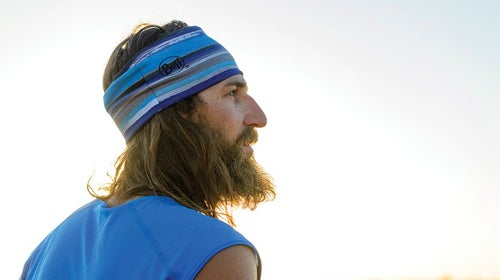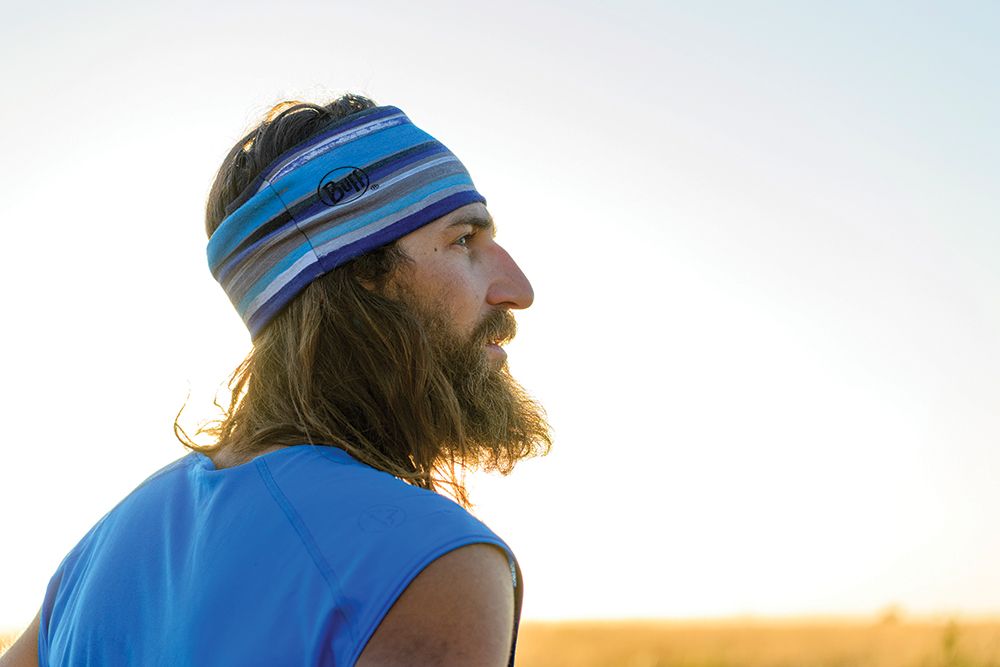It’s early fall, and Anton Krupicka easily scrambles up a 5.9 top-rope climb in Crested Butte’s Taylor River Canyon. Earlier that day, he hesitantly—because of a stubborn iliotibial band injury—joined a 9-mile group trail run with staff from , and a handful of media folks. “It hurts,” he says of his knee as he chalks up for another route. Then, a bright side: “But I get the same flow from climbing and skiing as I do from running.”
Krupicka has been a prominent figure in the ultrarunning scene since winning Colorado’s high-altitude Leadville Trail 100-mile race in 2006 as a relative unknown. He won it again in 2007 and enjoyed a series of race wins in his first few seasons, picking up major sponsorship deals and becoming somewhat of a poster boy for ultrarunning as the sport gained momentum. His penchant for running longhaired, bearded and shirtless in minimalist shoes had a sea of ultrarunning fans referring to him as “Jesus-man” for a decade; likewise, but inadvertently, he’s amassed a cult following.
Due to a string of injuries, most notably a broken fibula in 2011, this resident of Boulder, Colo., hasn’t raced the past few years, and he runs just one or two days a week. That doesn’t mean he’s disappeared from the ultrarunning scene. In fact, Krupicka has more sponsorship deals and followers on social media than ever—something that befuddles him.
Who is Anton Krupicka now, at least to the running world? Why is he still so popular? He can’t answer the question. And he’s uncomfortable trying.
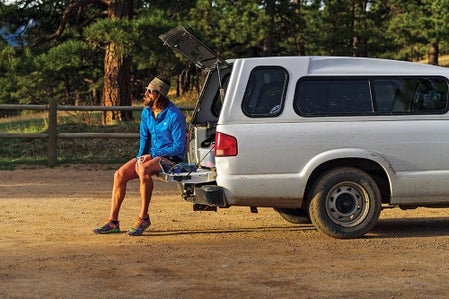
As a 10-year-old fifth grader in Niobrara, Neb., Krupicka won the Presidential Physical Fitness Test Mile Run. “That’s how I started running,” he says. “You’re just trying to figure out where you fit in, who you can impress, how you can feel cool with your peers. And running was just something I was good at.”
In the month leading up to the same test in sixth grade, he ran a mile—and tried to break six minutes for the distance— every single day. During the test, he posted another winning time (5:55).
At age 12, he ran a marathon in 3:50:11. “Oh dude, I was psycho when I was 12,” he says. “I was way more psycho about all that than I am now. I was counting calories. I remember doing fasts. I was reading all this 1970s running literature that I picked up at Goodwill, and fasting was sort of this cutting-edge thing. I was like, ‘I’ll give that a shot.’”
Krupicka continued to read, and to run, and to sometimes apply what he’d read to his running throughout high school and college. Long before the barefoot running boom, Krupicka read threads about it on Letsrun.com, along with a 1970s National Geographic article on the Tarahumara Indians that inspired him to start toying with running minimalist, and sometimes, shoeless. In the summer of 2005, he says he logged 200-mile weeks in the Puma Harambee—“basically a cross country spike without the spikes,” he says. He ran two hours before work and two hours after, explaining how running four hours a day was fairly standard for him.
With all those summer miles under his belt, and with who he’s become, one would think Krupicka would have been a standout collegiate cross-country runner. Not so. He was what he calls a “mediocre” collegiate runner at Colorado College, constantly disappointed with his race results. (Today, he says he realizes his body—and his running—operates cyclically, and he takes a number of weeks completely off every fall.)
“By October I was worthless,” he says. “Fall is always my lowest time of the year. It made it super frustrating. I trained so much, I was so passionate about it, but never had success.”
That all changed after college when Krupicka set his focus on the mountains and trained with a vengeance for the Leadville Trail 100. His racing season shifted to summer, and success followed.
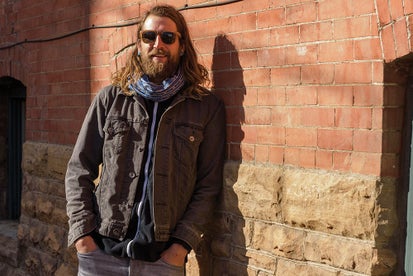
The summer of 2006, he won the Leadville Trail Marathon in early July. He won the Leadville Trail 100 in August, running the second-fastest time ever logged on the course at the time (17:01:56). Two weeks later, he set his road marathon PR (2:42; he later found out that he had mono).
Photos of Krupicka running shirtless despite storm clouds on top of 12,508-foot Hope Pass en route to winning Leadville garnered media attention for the then-22-year-old. “There was an inversion,” he defends, of running shirtless. “It’s a comfort thing. People were just taken aback, for some reason.” While most ultrarunners carry packs over wicking layers, Krupicka’s bare torso made him look like he was out for a quick 5-miler.
Following the photo—and a story in Trail Runner Magazine—the image of Anton Krupicka, the nature-boy-runner, started to grow. When, in 2009, Chris McDougall’s book Born to Run came out, the minimal footwear movement was in full swing, and it needed a face. Here was this young, lean guy running in tiny New Balance shorts and winning races. By 2009, he’d won a number of prestigious ultramarathons, including Leadville (twice), the Rocky Raccoon 100, the Collegiate Peaks, American River, Zane Grey and White River 50-Milers, plus a number of other races, all before turning 26.
What training formula was he using to gain so much success, so young? Krupicka double-majored in philosophy and physics in college, a duality that plays out in his running and training. He, more so than most runners, seems to apply a combination of the right and left sides of his brain to his sport.
He’ll run for hours in the mountains without much at all, preferring simplicity on the trail. On runs shorter than four hours, he’d deprive his body of fuel and fluids, but eat two to three gels an hour and hydrate sufficiently on race day. “The idea is,” he says, “A, it just sucks to carry shit. B, you’re training your mind and your body to survive on less. Then when you get to a race it feels easy, you feel great because you’re actually fueling yourself. It’s a premeditated thing.” He says that while training, he “bonks all the time,” but when he adequately hydrates and fuels during a race, his body responds. It’s what he calls “a caveman approach to running and training.” But it’s worked.
And though people may think of Krupicka as a free-spirited hippie loping around on mountain trails, he’s always meticulously logged everything from how many times he’s summited different peaks, to how much vertical he’s gained, to keeping a standard training log. “I like that kind of stuff,” he says. “I have spreadsheets of all kinds of different shit that I update daily.” He says he logs everything, in terms of what he does in the mountains, “because that’s what’s important” to him.
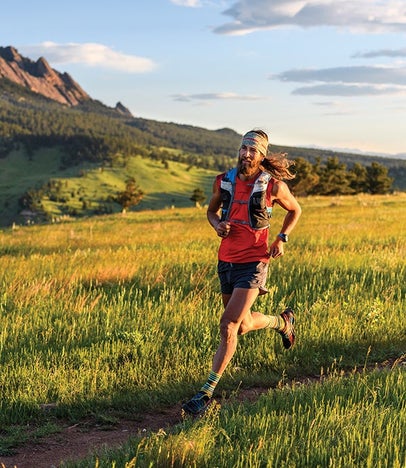
Since 2007, he’s blogged about his running (on a blog he titled ), and other topics that matter to him: music, literature and science as they apply to sport. His blog became popular reading for ultrarunning fans.
But while his racing success and image grew, so did his discomfort with having all eyes on him. Krupicka was the first-ever interview on , a website dedicated to the sport of ultrarunning, when it launched six years ago.
“That’s when I started getting cynical about it,” he says. “I still harbor this … not feeling deserving or worthy of attention. A big part of it comes from spending most of my life not having success as a runner. Now I’ve come to terms with that.”
But he struggles with not having won races in years—despite finishing sixth at the 2015 Transgrancanaria 125K. “On a near-daily basis, I get invites to races around the world. I don’t even race. I can’t even run. It’s frustrating.”
Like most runners, Krupicka’s relationship with running has evolved over the years.
As a guy who loves moving in the mountains, he wasn’t about to give up being an athlete when he broke his fibula—or when he suffered a stress fracture in his shin in 2015, or because of his most recent running hindrance, IT Band Syndrome (which he says skiing this past winter has helped improve).
Krupicka dabbled in rock climbing in college (and did a year of post-graduate work in geology). When his injured leg kept him off the trails in 2011, he took to the rocks, climbing Boulder’s Flatirons and routes in Eldorado Canyon with other runner/climbers. Once healthy again to run, he continued to climb, and started doing challenging link-ups that combined the two—running and climbing for speed records, joining an underground group called Satan’s Minions.
When the stress fracture of 2015 hindered his ability to run once again, Krupicka discovered road biking—and the power that music has on him. Although he doesn’t listen to music while running, he tunes in to podcasts and music while on the bike and while skiing. What comes through his earbuds sometimes makes him emotional, which he says has been happening the last few years. “I’ll be listening to a certain song,” he explains. “And I’ll be like, ‘Holy shit, this is wild!’” He explains that tears will be streaming down his face, mid-ride. His explanation? “I don’t know!” he says, laughing. “With physical activity, somehow the emotions are closer to the surface.”
This is Anton. There’s more to him than winning races.
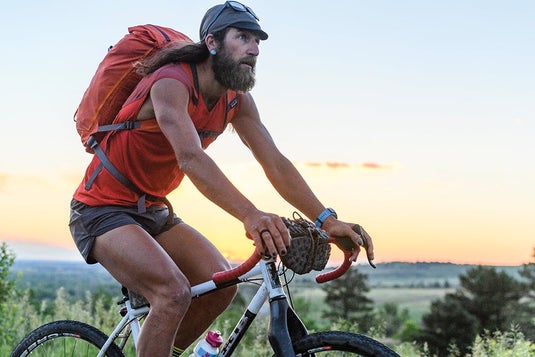
Just as Krupicka has been a favorite topic of varying media trends since his running career started, with magazine and web profile stories, his own blog followers, and social media fans, the influx of documentary-style trail running films have loved Anton, the topic, too. In the High Country (2012) captured his evolution and affinity for running, climbing and being in the mountains. Unbreakable (2011) followed the epic race between Krupicka, Kilian Jornet and Geoff Roes during the Western States 100 (Krupicka finished second). The Ingenious Choice (2014) followed Krupicka during the Ultra Trail du Mont Blanc, with narration throughout quoting Henry David Thoreau.
The media—and his fans—are inspired and intrigued by the guy who not only runs, but climbs, skis in the backcountry and rides his bike. He’s gotten attention in ClimbingMagazine for his recent record of what’s known as the Long’s Peak Triathlon (riding 38 miles on a bike to a trailhead, running 5 miles to the base of a climb, and climbing the 1,700- foot route on the 14,259-foot Long’s Peak before running 9 miles down and returning to the start point in Boulder via another 38-mile bike ride, all in just over nine hours).
“Literally, within a week to 10 days of starting a new activity, like climbing or skiing or biking, I was all in,” he says of his new hobbies, of which he’s quickly excelled. “I was psyched.” He continues to say that if he became 100 percent healthy tomorrow and never had a running injury again, he’d still only run four or five days a week, “just because there’s all this other shit I want to be doing still, you know?”
In December, Krupicka traveled to Patagonia with National Geographic ���ϳԹ���r of the Year Colin Haley to climb peaks in the Fitzroy Massif round-trip in a day, something that’s gotten even more attention.
Still, he wrestles with it.
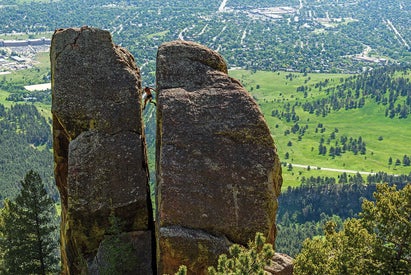
“I can’t help feeling like what I do is unimportant,” he says. “There are people in the world who have noble jobs and jobs that are for other people and not just for themselves. I feel like being a sponsored athlete is such a ridiculous life to lead. It’s like, what are you doing for people? Nothing.”
He talks about how posing for photos with fans can make him feel uncomfortable and even alienated, but the fact that he’s inspiring people gives him a “micro-speck of solace,” because he says he often gets inspired by other athletes—and musicians— and appreciates that kind of inspiration. But he’s unsettled with the image he feels people are projecting on him. “You know, this shirtless, minimalist dude … whatever they’ve come up with. So you just feel like no one ever gets you, ever.” Yet, he admits, “That’s, like, such a celebrity bullshit thing to whine about it.”
Krupicka sees himself as someone who loves to move in the mountains, as a runner, skier, climber, cyclist. And as a guy who loves music and literature, physics and philosophy. Someone who happens to run shirtless sometimes and who’s had successes as an ultrarunner, a few years ago. And as someone who’s not taking his lifestyle as a fully sponsored athlete for granted, despite feeling conflicted about it. And he’s grateful to be sponsored by a multisport company, La Sportiva, which makes gear for trail running, climbing and skiing.
This summer, he’s hoping his IT Band is healthy enough to race the Ultra Trail du Mont Blanc, a 103-mile race through the Alps. Beyond that, he has a list of four different remote, classic, technical alpine ridge traverses planned, one each in the Teton, Wind River, Eastern Sierra, and North Cascade mountain ranges, which will have him climbing a lot in preparation through the spring and early summer.
“All this stuff that I do outside of running, it’s no different from running,” he says. “It’s all the same in my attitude and sentiment toward it. I’m just trying to live fully, you know? Authentically.”
